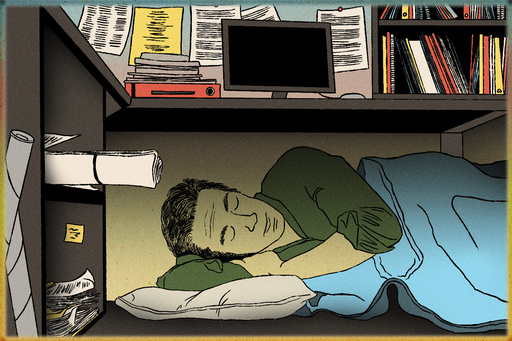NEW YORK — Sleeping on the job might sound unconventional, yet a growing number of Americans are embracing the practice. Whether it’s catching a few Z’s in parking garages, on side streets before school runs, or even within rented nap pods, more employees take strategic breaks to recharge. Inspired by historical figures like Winston Churchill and Albert Einstein, today’s power nappers often seek short sleep intervals to enhance their cognitive abilities, even while navigating the stigma associated with napping on the clock.
Numerous studies highlight the advantages of napping, which include improved memory and concentration. Unlike the United States, where a mid-afternoon snooze can sometimes be met with judgment, several countries like Spain, Italy, China, and Japan integrate napping into their work cultures. In these regions, taking a break to sleep is seen as an indication of commitment and diligence, as indicated by research published in the journal Sleep.
However, finding the time and space for a nap in a typical U.S. workplace can be challenging, as there is often a perception that those who nap are simply being lazy. In fact, federal regulations restrict napping in government buildings, barring it except in rare instances. Many advocating for napping argue that short rest periods can significantly boost productivity and creativity.
Marvin Stockwell, a public relations firm founder, shares his positive experiences with napping, often taking brief rests a few times a week. “They rejuvenate me in a way that I’m exponentially more useful and constructive and creative on the other side of a nap than I am when I’m forcing myself to gut through being tired,” Stockwell explains.
Sleep is essential for good health, akin to a balanced diet and regular exercise. Unfortunately, many people are not getting enough sleep, largely due to the distractions from electronics, as mentioned by James Rowley, program director of the Sleep Medicine Fellowship at Rush University Medical Center. He observes that many individuals bring their phones to bed, using them late into the night, which disrupts sleep.
Daytime napping isn’t a common practice in academic environments, where the pressure to publish can be overwhelming. Nevertheless, University of Southern California lecturer Julianna Kirschner takes short naps when possible to recharge. Her research on social media highlights how it can lead to compulsive use and decreased sleep, an issue she personally contends with, driving her to take restorative naps.
Rowley notes that keeping nap durations brief is vital for maximizing benefits. He suggests that naps should ideally last about 15 to 20 minutes, as longer attempts can lead to sleep inertia, which leaves individuals feeling groggy. Those who habitually rely on naps may need to reflect on their nightly sleep habits, he adds.
Timing also plays a crucial role in effective napping. Mid-afternoon is typically the best time due to a natural decline in alertness, whereas napping too late in the day could negatively impact nighttime rest for those with traditional work schedules. Michael Chee, director of the Centre for Sleep and Cognition at the National University of Singapore, states that any nap duration offers cognitive benefits, emphasizing the effectiveness of a 30-minute nap for practicality and positive outcomes.
Although workplace napping is unusual in the U.S., some businesses encourage it. Will Bryk, founder of an AI search startup, values the benefits of power naps so much that he installed sleep pods for his staff. Additionally, ice cream company Ben & Jerry’s has maintained a nap room in its Vermont office for years, which has been utilized by a select group of employees. Arianna Huffington also became a strong advocate for optimal sleep after a personal health crisis pushed her to prioritize it within her companies.
Kirsten Perez, a dedicated nap enthusiast, has adjusted her work habits to allow for brief rests, whether at her desk or in bed while working remotely as a marketing manager for Nvidia. She finds that a quick nap helps her restore her mood and cognitive function throughout her busy workday, often relying on a short alarm to maximize effectiveness.
In certain fields, naps are not only accepted but encouraged. The Centers for Disease Control and Prevention actively promotes napping for nurses on night shifts, although many face challenges in finding the time and space to do so during shifts. Neil Wong, inspired by his mother’s experience as a nurse, started Nap York, which provides rentable sleeping pods in New York City, catering to a variety of clients who need a place to recharge.
“There’s really no third space that’s quiet, that provides some privacy, where you can also rest,” Wong notes, pointing out the societal lack of accessible napping spots. As awareness of the benefits of napping continues to grow, more people may begin to embrace this rejuvenating practice in their daily routines.




